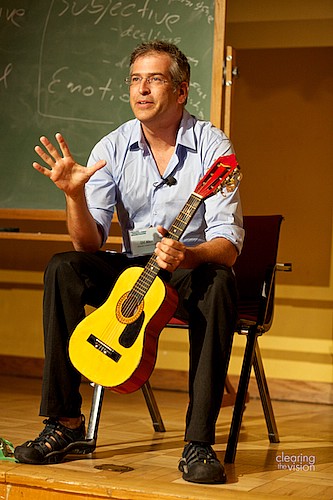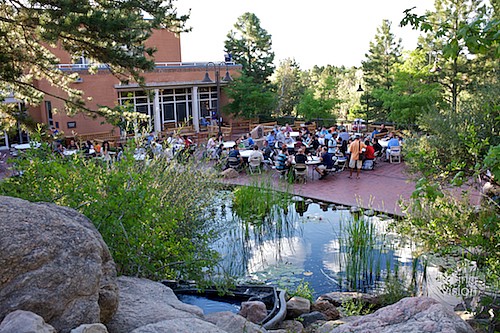 Jean-Luc looks out at life from his Airstream kitchen
Jean-Luc looks out at life from his Airstream kitchen
I’m not much of a manifesto guy, but the last week has made me want to jump up on the barricades and take a stand for a particular type of photography.
I’ve just finished the Documentary Storytelling workshop with Pulitzer Prize-winning photojournalist Deanne Fitzmaurice at the Santa Fe Photography workshops. Over four days (that included class time), I shot and edited a story about French chef Jean-Luc Salles, who’s given up running high-end restaurants to cook excellent food from scratch that he serves out of a 1960s Airstream trailer called Le Pod that sits in a parking lot here in Santa Fe. (I’ll write a post about him and show more of the photos later).
I learned a great deal, met lots of good people, and the experience enhanced my love of documentary photography as the most powerful and compelling type of shooting (not to mention the hardest to do well).
Making it hard for yourself
When you’re shooting a portrait, your first instinct is to clean up the background, get in tight to the subject and show only their face (or perhaps show a full-length portrait against a neutral non-distracting background).
A portrait photographer might well control also the light, give instructions on how the subject should pose, and take their time to get the shot they’re looking for. There’s nothing wrong with this, and the results can be great, but it’s largely about the photographer exercising control of the situation — the classic example of this being the white seamless: shoot someone who’s following for your instructions against a giant roll of white paper and your job of lighting and composition just got a lot easier.
But how much information does that really tell you about the person you’re photographing? It speaks to your craft, and shows us what the subject looks like, but often it doesn’t do much more than that.
In contrast, the documentary shooter will put someone in their real context by deliberately including the subject’s surroundings and using the light that’s available (which is part of the story).
This doesn’t mean that clutter is somehow approved of, however. Your job is still to compose elegantly, draw the eye in to the right place, and minimize irrelevant distractions, but it’s just got a lot harder, because now you’re looking at not just one plane of content but several, and all need to be appropriate and artfully arranged. And since you’re shooting someone moving in a real place rather than someone standing still in a studio, you’ve got to be quick about your decision-making too. Oh, and you’re likely not directing the subject either.
A successful image made under these circumstances (as well as being something of a miracle) gives the eye more to move around in, and expands our sense of the subject.
Truthfulness
So the role of the documentary photographer is to observe and create images, not to direct or intervene.
For press photographers, these rules are sacrosanct and breaking them can be a firing offence. No moving stuff out of the way to create a cleaner shot, or posing subjects or getting them to hold still (unless it’s clearly an environment portrait — where the expectation of the viewer of the image is that the subject is aware of the photographer and following instructions).
The same goes for processing — you can crop, burn, dodge and turn to black and white, but you can’t clone things out, paste things in, or in any other way manipulate the image to create a scene that wasn’t actually there.
Making Art out of Real Life
This is why I love the documentary approach — because you’re trying to capture and explain real life in an attractive way that is still true.
You’re not staging a shot, controlling all the lighting and the posing — you’re showing it as it really was but still making art out of it rather than just snapshots.
To me, it’s partly the challenge that is so appealing, but it’s mainly that I find the end result much more rewarding — shooting models in front of a perfect light set-up doesn’t communicate very much that’s real to me. I find the whole thing artificial, however beautiful.
Being Human
As if the technical challenge wasn’t hard enough, the documentary photographer has to decide what’s important and what images are worth making — and this requires an emotional involvement on their part.
To tell a good story, you have to understand the subject and empathize with them to a degree. If you don’t grasp what’s important to them, and what they feel strongly about, then you won’t be focussing on the right things.
While an important part of a studio photograph involves making the subject feel comfortable, this is so much more the case in documentary photography, when you’re likely entering people’s homes or places of work for a much longer time. For the workshop, I followed my subject Jean-Luc around for days, ending up at his home on a Friday night. This is weird behavior, but if you can’t put people at their ease in the midst of this, then you’ll never get anything good.
For a press photographer, you need good people skills even to get the access you want. Often people in the news for whatever reasons have people around them whose job is to protect them from photographers, or the subjects themselves just don’t want the invasion of privacy that comes with coverage. But Deanne made the point that if you’re honest about what you’re trying to do, and why, and you’re respectful about it, you can turn that ‘no’ into a ‘yes’.
Why it matters
Telling people’s stories in a visual medium such as photography can highlight things that are often ignored, shine a light on people’s struggles or triumphs and connect people in a remarkable way.
These needn’t be very important tales that win people Pulitzers, it could just be a family hanging out at home, or a skilled and passionate chef making great food in an Airstream trailer in a Santa Fe parking lot, but it’s still stuff that shows humanity in all its fantastic richness.
It might sound trite or overblown, but other folks can do the posed studio portraits, I’m going all in on the documentary side of things.
Families probably don’t need another staged portrait against a dodgy background, but a thoughtful series of photographs that shows the small joys of their daily life is a valuable thing.
And as organizations switch their marketing from cheesy slogans and big-budget spends to connecting with people more authentically, they need work that shows how they really do things.
It’s time to get real, and documentary photography does that like nothing else.
(This blog post is cross-posted from my other website, Clearing the Vision, which focuses on my documentary-style family and children work, and posts of interest in keen photographers. But I thought it deserved a spot here too, as it addresses my approach to photography and multimedia production for organizations)


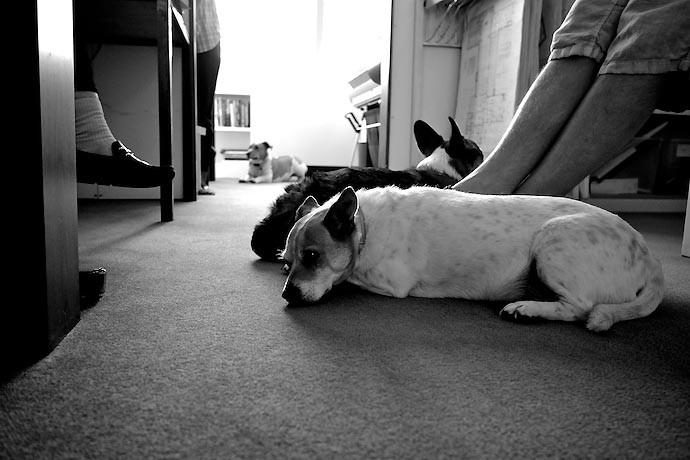
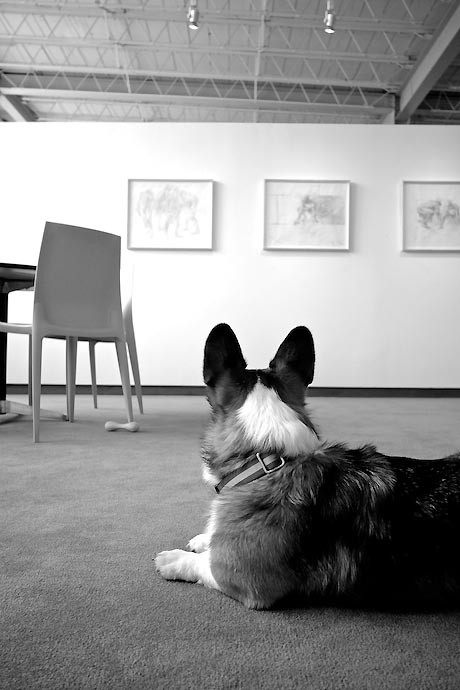

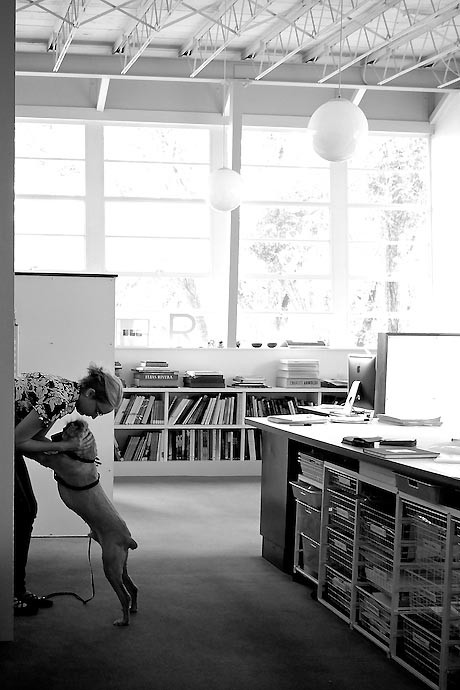
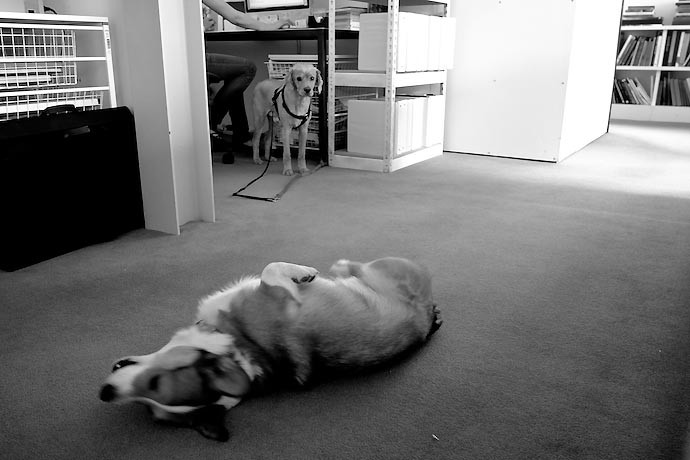





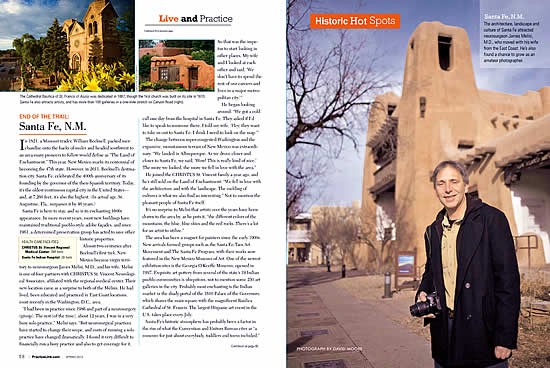
 Jean-Luc looks out at life from his Airstream kitchen
Jean-Luc looks out at life from his Airstream kitchen

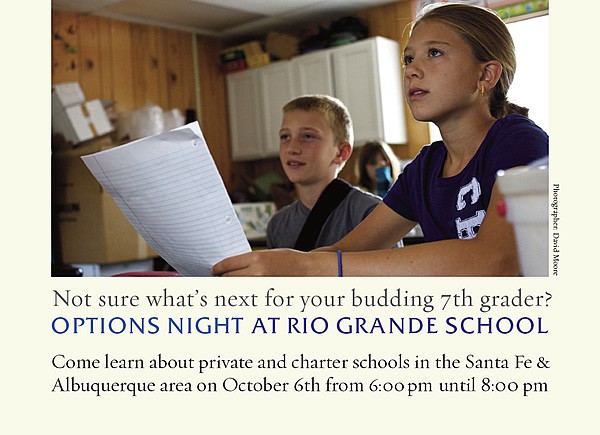
 We’re delighted to announce a new version of the site for the New Mexico Community Foundation.
We’re delighted to announce a new version of the site for the New Mexico Community Foundation.

